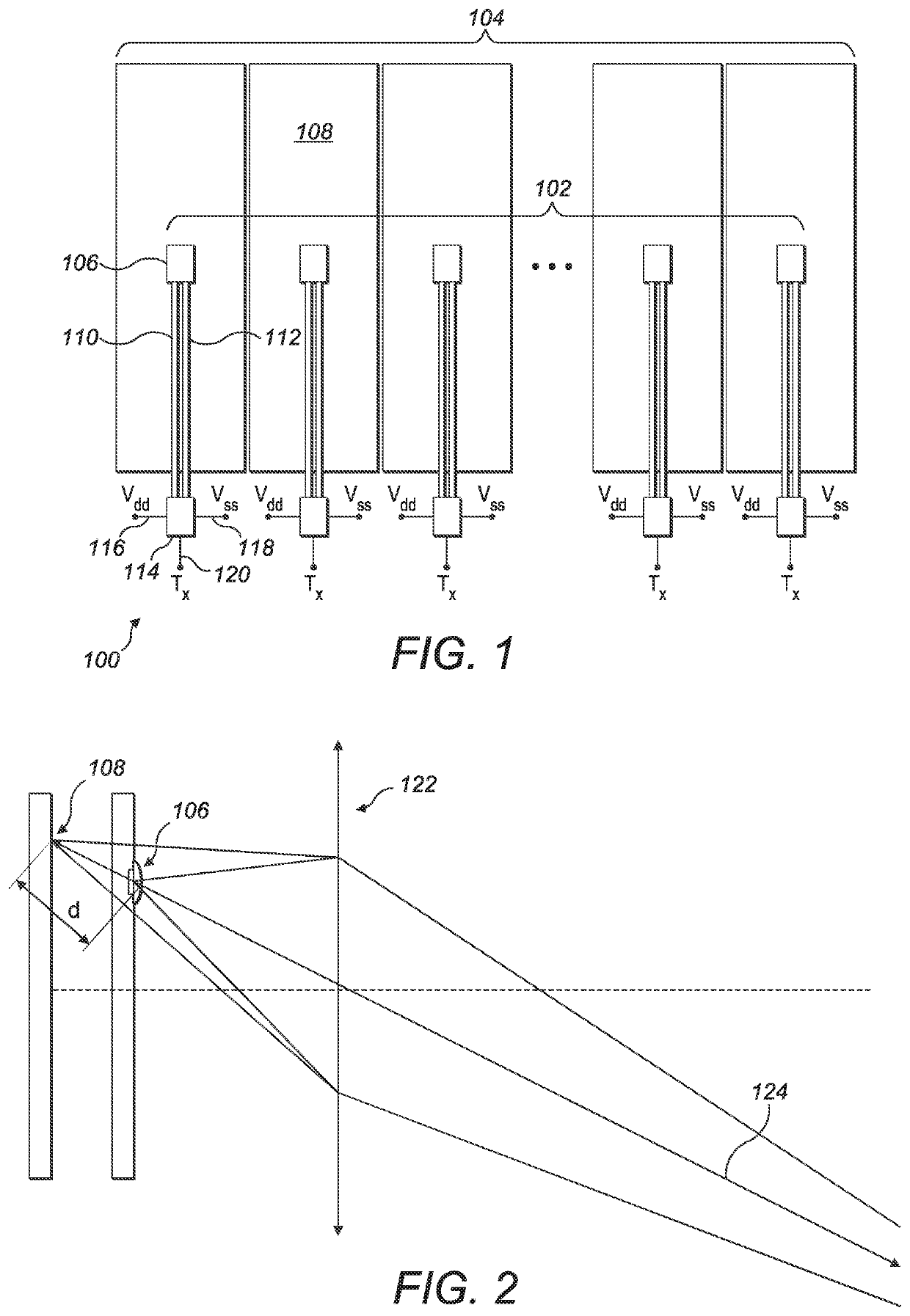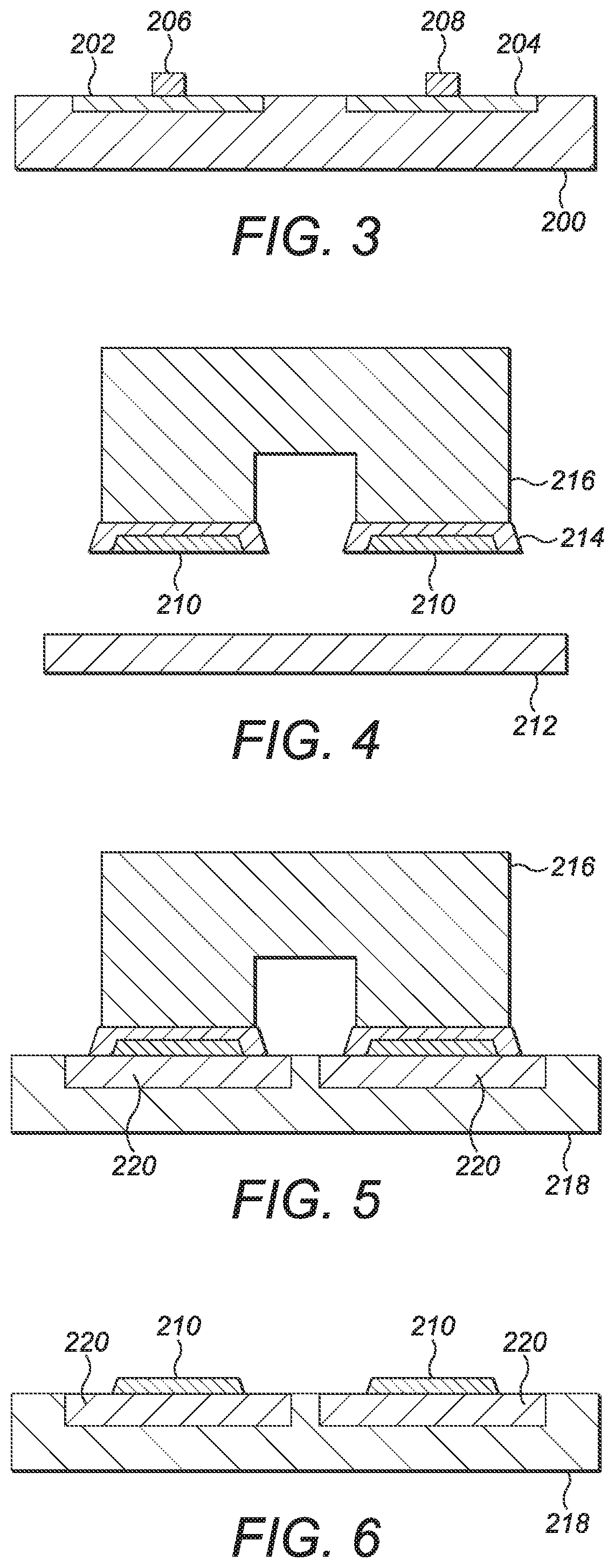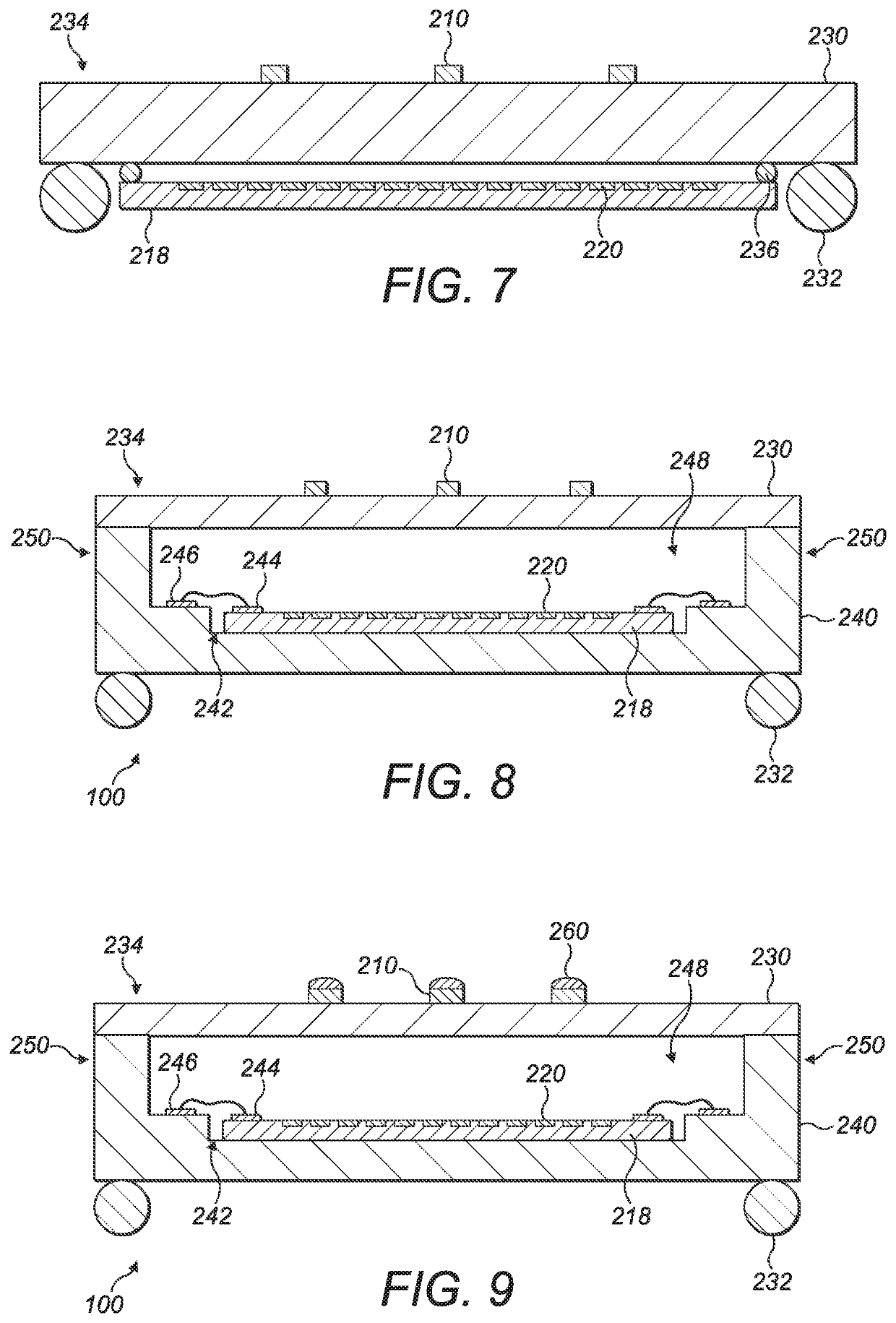Sensor device
a sensor and sensor technology, applied in the field of sensor devices, can solve the problems of limited efficiency of the sensor, high undesirable noise components, and limited miniaturisation of such systems, and achieve the effects of improving the signal-to-noise ratio of the detection signal, increasing the amount of reflected light, and improving the angular resolution of the sensor devi
- Summary
- Abstract
- Description
- Claims
- Application Information
AI Technical Summary
Benefits of technology
Problems solved by technology
Method used
Image
Examples
Embodiment Construction
[0039]Throughout the following description identical reference numerals will be used to identify like parts.
[0040]Time-of-flight measurement systems and other systems, for example night vision system, comprise one of more sensor devices, for example optical sensor devices. Referring to FIG. 1, a sensor device 100 comprises, in this example, a plurality of emitter devices 102 for emitting electromagnetic radiation, for example light, for example an array of emitter devices, and a plurality of detector devices 104 for detecting electromagnetic radiation, for example light, for example an array of detector devices. The plurality of emitter devices 102 respectively have an emitter region from which the light is emitted, and the plurality of emitter devices 102 respectively reside on a first surface. The plurality of detector devices 104 respectively have a detector region through which light to be detected propagates, and the plurality of detector devices 104 respectively reside in a se...
PUM
 Login to View More
Login to View More Abstract
Description
Claims
Application Information
 Login to View More
Login to View More - R&D
- Intellectual Property
- Life Sciences
- Materials
- Tech Scout
- Unparalleled Data Quality
- Higher Quality Content
- 60% Fewer Hallucinations
Browse by: Latest US Patents, China's latest patents, Technical Efficacy Thesaurus, Application Domain, Technology Topic, Popular Technical Reports.
© 2025 PatSnap. All rights reserved.Legal|Privacy policy|Modern Slavery Act Transparency Statement|Sitemap|About US| Contact US: help@patsnap.com



